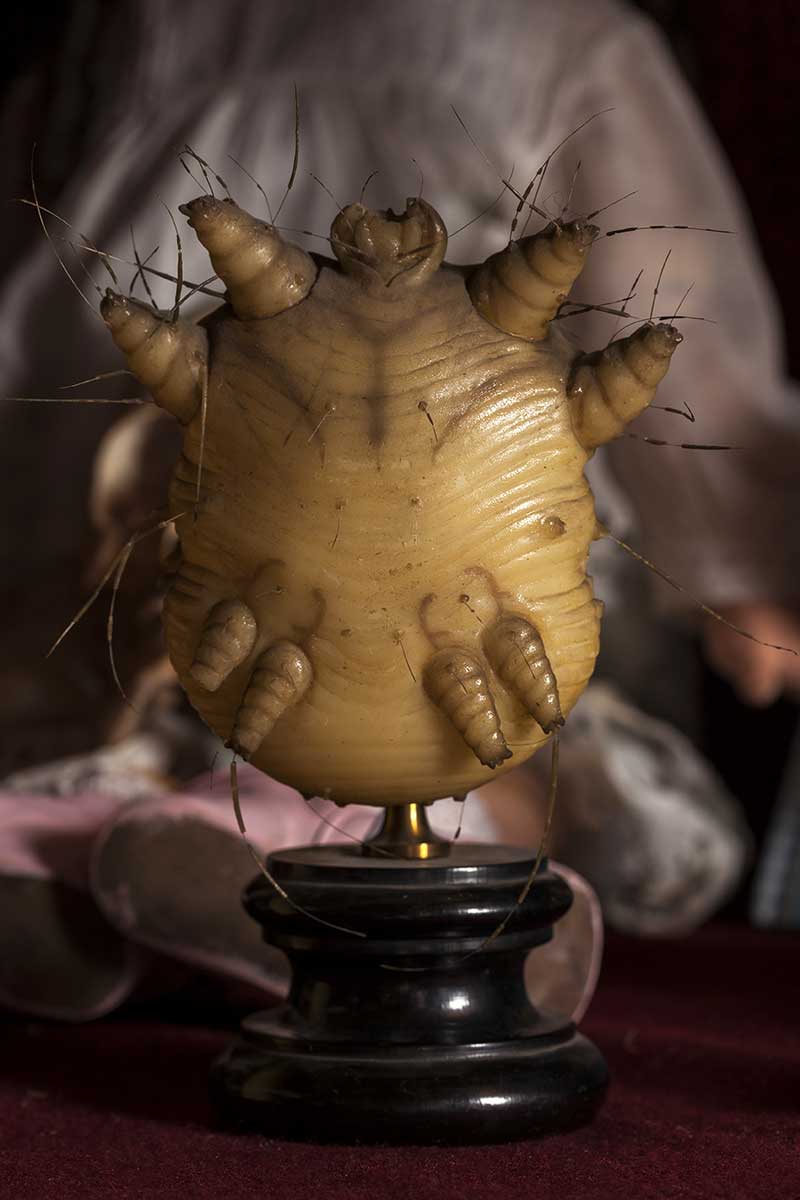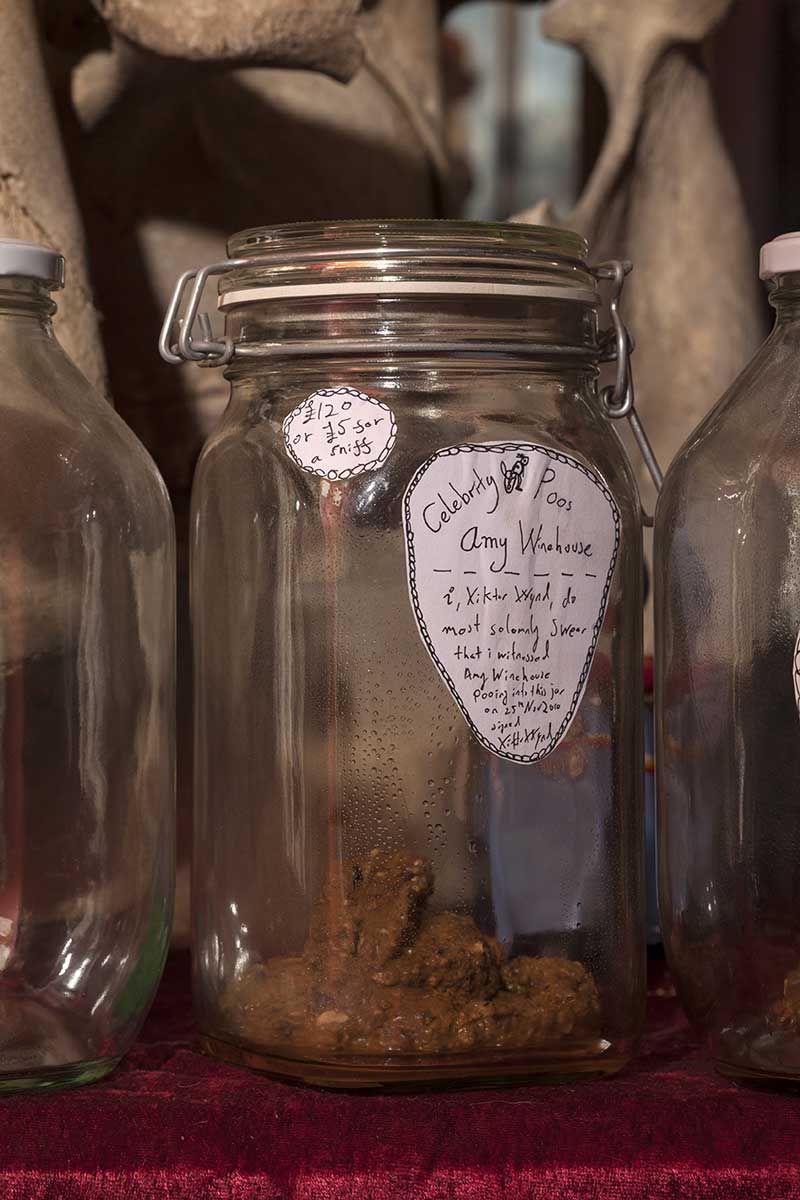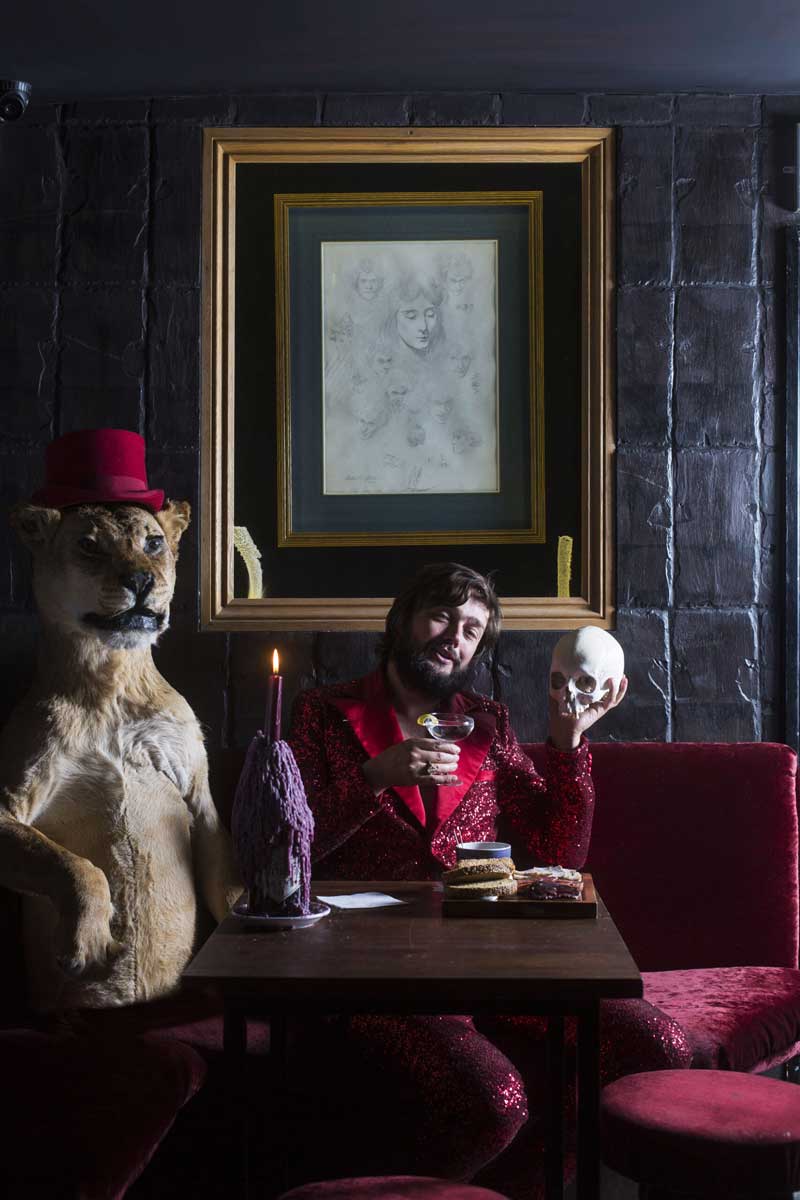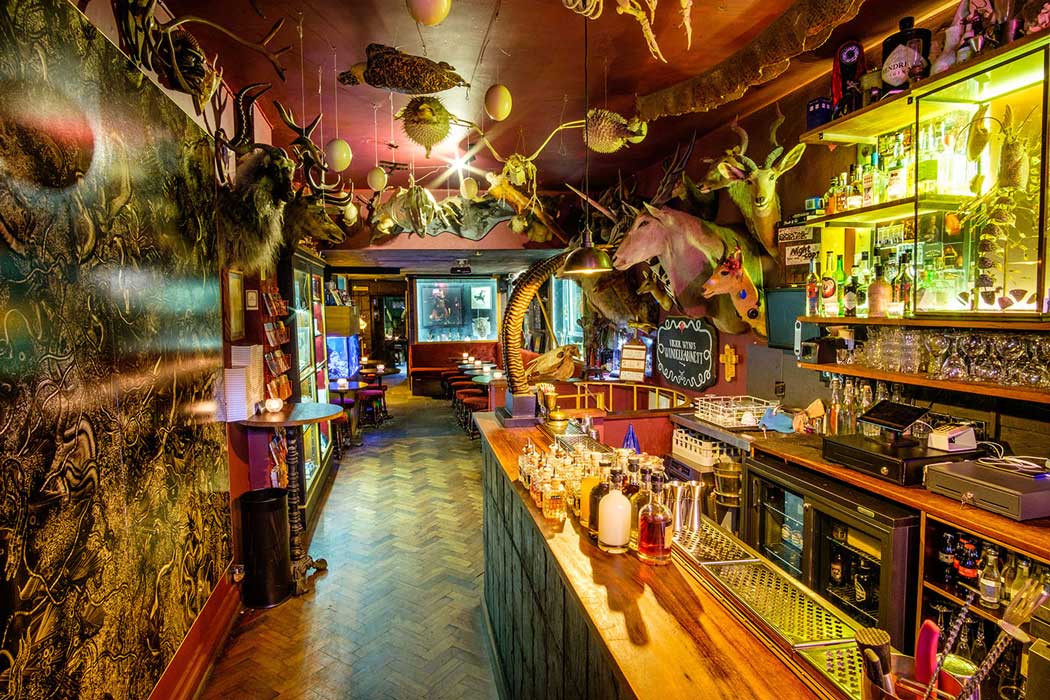The Viktor Wynd Museum of Curiosities, Fine Art & Natural History in Hackney is a unique small private museum with an eclectic array of exhibits.
The unusual exhibits range from shrunken heads and two-headed lambs to taxidermy specimens and outsider art. While not suited for the easily unsettled, The Viktor Wynd Museum promises an alternative and unforgettable London adventure for those seeking something beyond the ordinary.

What to see at the Viktor Wynd Museum of Curiosities, Fine Art & Natural History
The museum showcases an eclectic collection, evoking the spirit of a Victorian-era cabinet of curiosities, showcasing a blend of the strange and the outright bizarre.
Unlike conventional museums, the Viktor Wynd Museum boasts a diverse array of exhibits ranging from artefacts with genuine historical value to oddities like celebrity poo and a giant hairball from a cow’s stomach. Taxidermy specimens coexist with shrunken heads, while pickled genitals share space with outsider art. The museum’s eclectic collection is whimsically categorised to surprise and delight (or repulse) visitors.


Themed sections include Human Hair, displaying intricate art crafted from this versatile material and the macabre Cabinet of Monsters, featuring peculiar creatures challenging our understanding of nature.
The Dandies section has memorabilia from the flamboyant subculture, including the nails of self-proclaimed crucified dandy Sebastian Horsley. The museum also houses human remains, tribal skulls and preserved dead pets reflecting Wynd’s unconventional tastes.
Beyond the curiosities, the museum showcases an extensive collection of outsider and surrealist art, including works by Leonora Carrington and the Spare Room is a unique homage to Austin Osman Spare. Natural history exhibits feature dodo bones and extinct bird feathers, alongside a skeleton of a giant anteater and the gold-plated skull of a hippopotamus rumoured to have belonged to Pablo Escobar.
The museum takes an unusual approach, with either limited and incomplete descriptions on some exhibits or engaging descriptions often laced with dark humour on others. Visitors can unwind at the Last Tuesday Society’s Absinthe Parlour, an absinthe bar on the top floor, amidst the museum’s oddities, sipping on absinthe or handcrafted cocktails.
A word of caution: The museum’s exhibits may be sensitive or graphic, making it unsuitable for all visitors. However, for those with a curious disposition, The Viktor Wynd Museum offers an unforgettable experience, challenging perceptions and sparking conversations about the wonders of our world.

Visiting the Viktor Wynd Museum of Curiosities, Fine Art & Natural History
The Viktor Wynd Museum of Curiosities, Fine Art & Natural History is in Hackney in East London, midway between Bethnal Green and the centre of Hackney. It is less than a 10-minute walk to the Young V&A, although there’s not much else to see in the immediate vicinity around the museum.
The museum is a four-minute walk from Cambridge Heath railway station, which has regular Overground trains to Liverpool Street. This makes it relatively easy to get to, despite being off the beaten tourist trail.
The Viktor Wynd Museum is open Tuesday to Sunday (closed on Mondays) but does not open in the morning and it is one of the few tourist attractions in London that stays open in the evenings.
Entry to the museum is £10 but it is cheaper on Thursdays or if you also have also made a reservation for the bar. Saturday is the busiest day so you may want to visit on another day for a quieter experience.
The nature of the exhibits means that it isn’t suitable for everyone and visitors younger than 18 are only allowed before 5pm and only when accompanied by an adult.
The Last Tuesday Society’s Absinthe Parlour is the museum’s on-site bar. This is a radical change from your regular museum cafe and it’s probably the most appropriate place for a first-timer to try ‘the green fairy’. Other drinks are available if you’re not up for absinthe and there are other places to eat and drink in the neighbourhood (although not as many as you would find in other parts of London).

The museum is accessed via a steep spiral staircase, meaning that it may not be suitable if you have mobility issues.
It’s a fairly small museum and you should be able to see it in 30–45 minutes.


There are no comments yet.